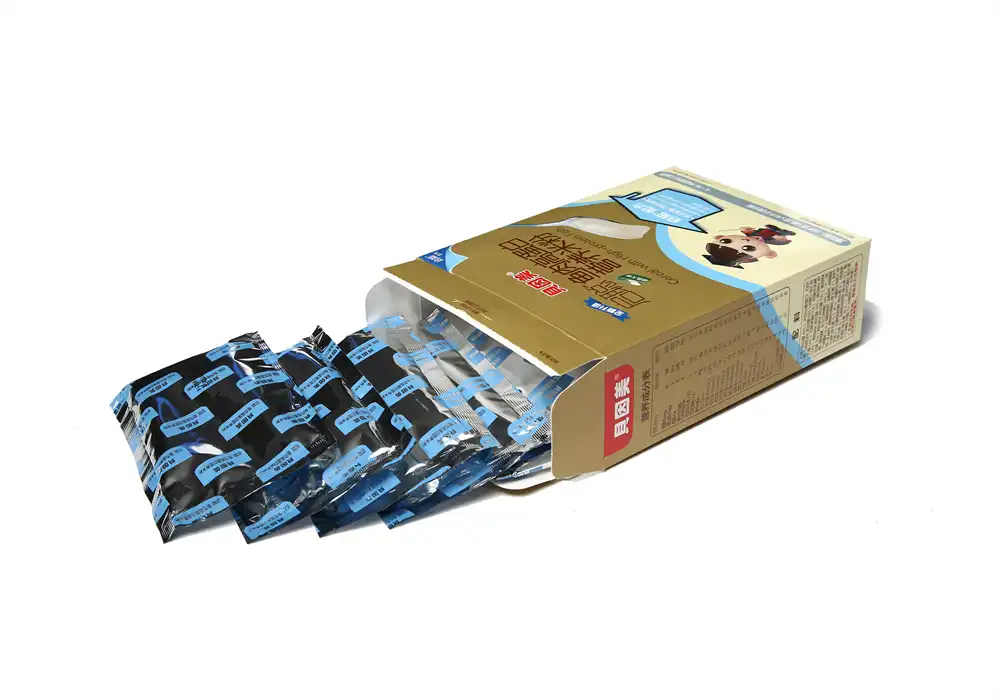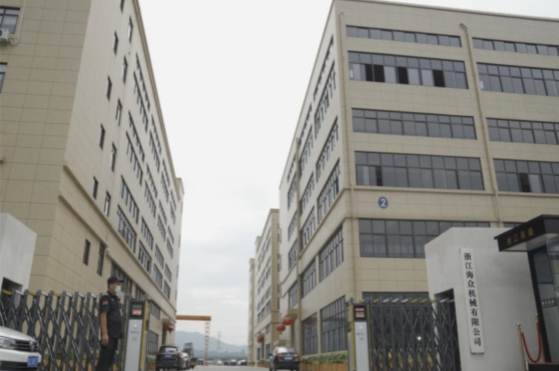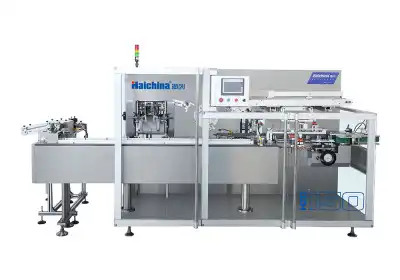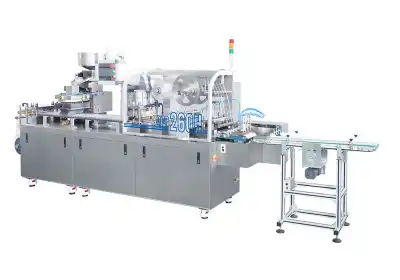The Best Blister Packing Machines for Tablet Packaging
When it comes to efficient and reliable tablet packaging, blister packing machines are the gold standard in the pharmaceutical industry. These innovative devices offer a perfect blend of protection, presentation, and convenience for medication dosage. The best blister packaging machines for tablet packaging combine cutting-edge technology, versatility, and user-friendly features to streamline production processes. From high-speed rotary models to compact desktop units, the market offers a diverse range of options to suit various production scales and requirements. In this comprehensive guide, we'll explore the top-performing blister packing machines, their unique features, and how they can revolutionize your tablet packaging operations.

Understanding Blister Packaging Technology
The Fundamentals of Blister Packaging
Blister packaging is a widely used method in the pharmaceutical industry for enclosing individual tablets, capsules, or lozenges in a sealed and protective environment. This packaging technique involves thermoforming a plastic sheet into cavities or pockets that securely hold the product. After the medication is positioned inside, a backing material - commonly aluminum foil or plastic film - is applied and heat-sealed to enclose each dose. This process creates a tamper-evident, hygienic package that maintains the physical and chemical stability of the product. Blister packs are particularly valued for their ability to provide convenient, unit-dose packaging that simplifies medication management and enhances overall patient safety and compliance.

Advantages of Blister Packaging for Tablets
The extensive use of blister packaging in the pharmaceutical sector is largely attributed to its comprehensive range of benefits. One of its primary advantages is the excellent protection it offers against environmental factors such as moisture, oxygen, and light, which can degrade medication over time. By preserving the quality and extending the shelf life of tablets, blister packs produced by blister packaging machines ensure reliable patient outcomes. Additionally, these packages improve medication adherence by clearly organizing individual doses, making it easy for patients to track their intake. From a marketing viewpoint, blister packaging allows for visible branding and product information, enhancing product appeal and differentiation in competitive retail settings.

Key Components of Blister Packing Machines
Modern blister packing machines are sophisticated systems that combine precision engineering with automation to deliver high-speed, high-quality packaging solutions. These machines typically include a forming station, where thermoformed plastic sheets are shaped into cavities, followed by a filling station that precisely places tablets or capsules into the formed pockets. The sealing station then applies a backing material, ensuring each cavity is securely enclosed. Additionally, many machines are equipped with integrated quality control systems, such as vision inspection cameras to detect defects and weight verification units to check dosage accuracy. These components work together to guarantee consistent, reliable, and compliant pharmaceutical packaging operations.

Selecting the Ideal Blister Packaging Machine for Your Needs
Assessing Production Volume Requirements
One of the primary considerations when choosing a blister packaging machine is your production volume. High-volume pharmaceutical manufacturers may require continuous motion rotary machines capable of producing thousands of blisters per minute. In contrast, smaller operations or those dealing with specialty medications might find intermittent motion machines or even manual systems more suitable. It's crucial to select a machine that not only meets your current needs but also allows for future growth and scalability.
Flexibility and Changeover Capabilities
In today's dynamic pharmaceutical market, versatility is key. The best blister packing machines offer quick and easy changeover capabilities, allowing manufacturers to switch between different tablet sizes, shapes, and packaging configurations with minimal downtime. Look for machines with tool-less change parts, servo-driven adjustments, and intuitive control interfaces that facilitate rapid product changeovers and maximize operational efficiency.
Compliance with Regulatory Standards
Given the stringent regulations in the pharmaceutical industry, it's imperative to choose a blister packaging machine that complies with relevant standards such as cGMP, FDA, and CE requirements. Machines should be designed with features that support traceability, validation, and quality assurance processes. This includes integrated vision systems for defect detection, precise dosage control mechanisms, and comprehensive data logging capabilities for audit purposes.
Innovations in Blister Packaging Technology
Smart Integration and Industry 4.0 Features
The latest generation of blister packaging machines is embracing Industry 4.0 principles, offering advanced connectivity and data analytics capabilities. These smart machines can integrate seamlessly with Manufacturing Execution Systems (MES) and Enterprise Resource Planning (ERP) software, providing real-time production data and facilitating predictive maintenance. Some cutting-edge models even incorporate artificial intelligence to optimize production parameters and reduce waste automatically.
Sustainable Packaging Solutions
As environmental concerns take center stage, blister packaging machine manufacturers are developing eco-friendly solutions. This includes machines capable of processing biodegradable and recyclable materials without compromising on package integrity or production speed. Some innovative designs focus on reducing material usage through optimized cavity designs and more efficient sealing techniques, contributing to a smaller environmental footprint.
Enhanced Safety and Security Features
In response to growing concerns about counterfeit medications and tampering, advanced blister packaging machines now incorporate enhanced security features. These may include the ability to add serialization codes, holograms, or other anti-counterfeiting measures directly during the packaging process. Additionally, some machines offer child-resistant and senior-friendly packaging options, addressing safety concerns while ensuring accessibility for intended users.
Conclusion
Selecting the best blister packaging machine for tablet packaging is a critical decision that can significantly impact your pharmaceutical manufacturing operations. By considering factors such as production volume, flexibility, regulatory compliance, and technological innovations, you can choose a machine that not only meets your current needs but also positions your business for future success. As the industry continues to evolve, partnering with a reputable manufacturer like Zhejiang Haizhong Machinery Co.,Ltd. ensures access to cutting-edge technology and expert support, helping you stay ahead in the competitive pharmaceutical packaging landscape.
Contact Us
Ready to elevate your tablet packaging capabilities? Contact Zhejiang Haizhong Machinery Co.,Ltd. today at [email protected] to explore our range of state-of-the-art blister packaging machines and find the perfect solution for your pharmaceutical packaging needs.
References
Johnson, A. (2022). Advances in Pharmaceutical Packaging Technology. Journal of Drug Delivery Science and Technology, 68, 103-115.
Smith, B., & Brown, C. (2021). Blister Packaging: A Comprehensive Guide for Pharmaceutical Manufacturers. Pharmaceutical Engineering, 41(3), 22-31.
Wang, Y., et al. (2023). Sustainable Materials in Pharmaceutical Blister Packaging: Challenges and Opportunities. International Journal of Pharmaceutics, 624, 122023.
Garcia, R. (2020). Industry 4.0 in Pharmaceutical Manufacturing: Opportunities and Challenges. PDA Journal of Pharmaceutical Science and Technology, 74(6), 669-683.
Thompson, K. (2022). Quality Control in Blister Packaging: Best Practices and Emerging Technologies. American Pharmaceutical Review, 25(4), 40-46.
Lee, H., & Kim, J. (2023). Anti-Counterfeiting Measures in Pharmaceutical Packaging: A Review of Current Trends and Future Prospects. Drug Safety, 46(5), 491-505.

Submit the form now to get a unique quote!

ZHEJIANG HAIZHONG MACHINERY CO., LTD.
Popular Blogs
-
 Successful caseProducts and services
Successful caseProducts and servicesHow to Train Employees to Operate a Bottle Packing Machine Effectively?
-
 Successful caseIndustry insights
Successful caseIndustry insightsThe Blister Packaging Process: A Complete Step-by-Step Guide
-
 Successful caseComparative analysisIndustry insights
Successful caseComparative analysisIndustry insightsWhat Type of PVC Is Best for Blister Packing Machines?